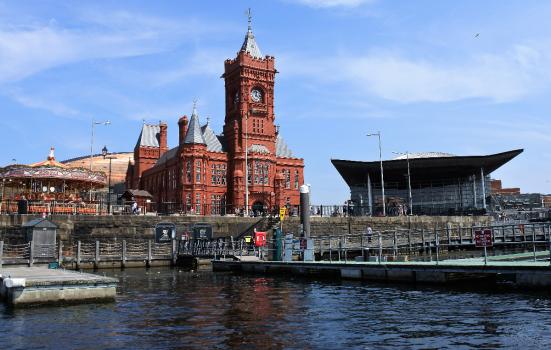Following plans for a Northern creative corridor, research identifies six more areas of the UK that could adopt the model to stimulate growth of the creative industries.

It's No Game/Creative Commons
Investment in creative clusters will be key to economic growth and helping to level up the UK economy and has the potential to be 'supercharged' by developing lager 'creative corridors' across the UK, according to new research.
A report published today (6 December) by Creative Policy and Evidence Centre (Creative PEC) found that, in addition to already announced plans for a Northern creative corridor, there are a further six areas where the concept of linking up activity through targeted intervention and investment can be considered.
Potential corridors were identified in: the West Midlands; across Edinburgh, Glasgow and Dundee; the East Midlands and Sheffield; Cambridge; across Cardiff, Newport, Bristol, Bath, Glouchester and Cheltenham; around London and the M25 area; and Cambridge.
READ MORE:
- North of England 'creative corridor' prototype to launch
- Coalition forms to develop cultural devolution proposals
The creative corridor model has already been proposed for the North of England with the launch of the Northern Creative Corridor Charter last month.
Meanwhile, the Labour party has pledged to grow the creative sector outside London and the South East if it forms the next government, while the current government has pledged the growth of a Northern powerhouse through funding channels such as the Creative Growth programme.
Creative PEC Director, Professor Hasan Bakhshi, said an enduring feature of the UK’s creative economy is its heavy concentration in London and the South East of England.
He added: “With regional devolution, new mayoral authorities and the creative sector identified as a key growth industry across the political spectrum this report lands at the perfect time to support creatives and creative businesses across the whole country.”
Several of the potential areas for creative corridors suggested by the analysis span administrative boundaries at local, mayoral combined authority or national levels.
The report’s authors say pursuing a more joined-up and pan-regional approach to supporting these different clusters may “create opportunities for growth that are mutually beneficial to the areas encompassed”.
But they warn that these opportunities “may be missed if the interests of clusters or microclusters are pursued in isolation at the individual level”.
Creative microclusters as ‘growth hotspots’
Creative PEC’s latest report is the first of its kind to explore three levels of the UK’s creative industries geographies in one place - clusters, microclusters and corridors.
The research found creative microclusters - defined as clusters at street, neighbourhood and town level - are the “growth hotspots of the UK’s creative industries”.
The 709 creative microclusters previously identified in Creative PEC’s Creative Radar research account for 46% of all employment in the UK’s creative industries and have grown more rapidly than the creative industries in the rest of the UK.
This is especially the case for microclusters located in the DCMS-55 - creative clusters identified by DCMS in 2022 - which on the whole continue to make outsized contributions to the UK’s creative industries.
However, analysis found companies in microclusters located outside creative clusters appear to have been hit harder by the pandemic.
And while the research found that, notwithstanding the challenges of the pandemic, the creative industries have grown in many parts of the UK, significant national and regional inequalities remain.
Dr Josh Seipel, Creative PEC Research Consortium Partner for R&D, Innovation and Clusters, said clusters and microclusters of creative activity could play a unique role in reducing the UK’s regional inequality.
“Our new data analysis shows that microclusters are fuelling growth in the larger creative clusters. This provides a good argument for policy intervention at the hyperlocal level to bolster activity already taking place and support the development of new clusters,” he explained.
“Our deep-dive analysis of creative industries business activity in several places in the north of England shows similar characteristics to those in London hence we can be reasonably confident that policy intervention at this level would support wider regional development.”
Among the areas pegged for future research by Creative PEC are understanding the linkages between creative clusters and the rest of the economy and enriching the evidence base on the key elements and determinants of creative clustering and how these are changing over time.




